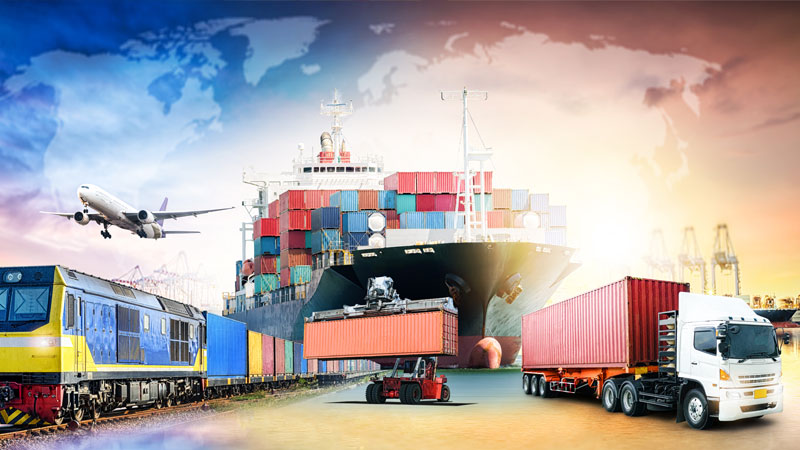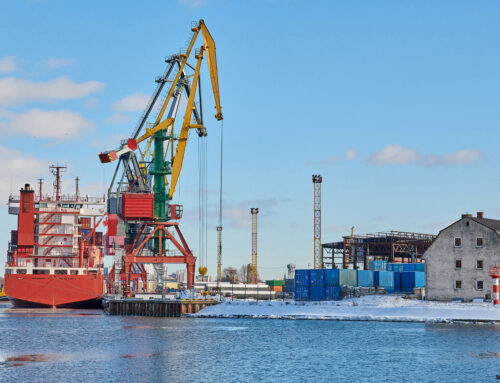Back to Turbulence
There was hope that the chaos plaguing the global supply chain was finally settling—the floating traffic jams at ports, the skyrocketing costs of moving freight, & the shortages of goods all seemed like issues of the past, confined to the Covid-19 era. Unfortunately, this is not the case.
The logistics industry is now witnessing cargo prices surge due to a series of maritime disturbances.
Rising Red Sea Tensions
In late 2023, Houthi rebels in Yemen began attacking ships entering the Red Sea, heading towards the Suez Canal—a crucial route for vessels traveling between Asia, Europe, & the East Coast of the United States. This situation forced ships to avoid the waterway & take the longer route around Africa, extending their journeys by up to two weeks.
Panama Canal Drought Impact
A severe drought in Central America reduced water levels in the Panama Canal, leading authorities to limit the number of ships passing through this critical trade route. Recently, dockworkers have threatened strikes on the East & Gulf Coasts of the United States, while longshore workers at German ports have already halted shifts demanding better pay. Additionally, Canadian rail workers are on the verge of striking, jeopardizing cargo movement across North America & risking backups at major ports like Vancouver, British Columbia.
Rising Costs & Delays
The increasing upheaval in shipping is prompting carriers to raise rates & raising concerns about potential waterborne gridlock that could again threaten retailers with product shortages during the crucial holiday shopping season. This disruption could also exacerbate inflation—a significant economic concern affecting the American presidential election.
The supply chain disturbances of the pandemic demonstrated that trouble in one area tends to ripple out widely. A delayed container of chemicals can halt production for factories waiting on those ingredients. Ships stuck at ports disrupt the flow of goods, congesting warehouses & putting pressure on trucking & rail industries.
Shipping Costs Skyrocket
Since October, the cost of moving a 40-foot shipping container from China to Europe has risen to about $7,000—from an average of around $1,200, according to data from Xeneta, a cargo analytics company in Norway. While this is lower than the $15,000 peak in late 2021 during the worst supply chain disruptions, it is still about five times the pre-pandemic rates. Similarly, rates for shipping goods across the Pacific have surged. It now costs over $6,700 to transport a 40-foot container from Shanghai to Los Angeles, & nearly $8,000 for Shanghai to New York. As recently as December, those costs were around $2,000.
Importers are lamenting the return of another pandemic-era issue: carriers frequently canceling confirmed bookings & demanding special handling charges & premium service fees to secure container space on vessels. Alarmed by growing threats to sea transportation, companies are accelerating plans to stock up on goods for the holiday season. They are urging their suppliers in China to speed up packaging for food items, anticipating shipping delays.
Contract Challenges & Surcharges
Contracts with ocean carriers to move containers from China to Chicago at prices below $5,000 are increasingly difficult to maintain. Recently, escalating “peak season surcharges” could add up to $2,400 per container. Even at those prices, carriers often claim they have no space, forcing companies to book on the spot market, where prices fluctuate, with rates now reaching $8,000.
Experts argue that spot rates do not reflect demand & supply in a competitive global market, noting that container shipping lacks competition on major routes, allowing carriers to significantly raise prices when the system is strained. Three primary alliances of carriers control 95% of container traffic between Asia & Europe & over 90% between Asia & the East Coast of the United States.
During the pandemic’s worst disruptions, extreme delays & product shortages led retailers to pay carriers up to $28,000 to move single containers across the Pacific, resulting in record profits for the industry. Companies with contracts locking in prices are still sometimes forced to pay sharply rising spot market rates, similar to the peak pandemic years.
Escalating Threats
The immediate cause of the recent increase in shipping prices is the targeting of vessels by Houthi rebels, who are acting in support of Palestinians under Israeli assault. The threat is escalating as the Iranian-backed Houthi rebels increase their attacks, using missile strikes & sea drones—remote-controlled boats loaded with explosives. Recent assaults have sunk two vessels, including a Greek-owned ship carrying coal.
With container traffic through the Suez Canal dropping to one-tenth of its usual flow, most ships traveling between Asia & Europe now navigate around Africa, burning more fuel. Carriers have concentrated their fleets on the most lucrative routes, such as those connecting Shanghai & Rotterdam, Europe’s busiest port. This has forced cargo bound for other destinations to stop for loading & reloading at major transshipment ports like Singapore & Colombo, Sri Lanka, which are now overwhelmed with incoming vessels. Ships must wait at anchor for up to a week before docking.
Unavoidable Increases & Industry Manipulation
Given the disruptions & additional costs, some increase in shipping rates is inevitable. However, those dependent on the industry argue that carriers are raising prices beyond their own additional costs. The carriers learned a valuable lesson during the pandemic—they will manipulate capacity & hike up freight rates.
The greatest concern is that floating jams could become a self-fulfilling prophecy. As importers face increased shipping prices & port congestion, they are placing orders earlier, potentially leading to a surge of incoming cargo at major ports like Los Angeles, Newark, & Savannah, Georgia, exceeding the capacity of trucking, railroads, & warehouses.
Future Uncertainties
The potential for a rail strike in Canada is prompting cargo bound for Vancouver to divert to Southern California, the site of the worst traffic jams during the pandemic disruptions. In Tennessee, importers are increasing their orders in response to longer delivery times.
Adding to the concern is the uncertainty surrounding the duration & impact of the latest disruptions. While Panama Canal restrictions have mostly been lifted as the rainy season replenishes water levels, climate change increases the risk of future droughts. The pandemic’s consequences were difficult enough to understand, with significant miscalculations regarding the demand for factory goods. However, pandemics eventually end. The Houthi strikes & their impact on the Suez Canal involve significant geopolitical variables, making forecasting difficult.
It’s a highly complex situation with no clear solution in sight, appearing open-ended & unpredictable.







